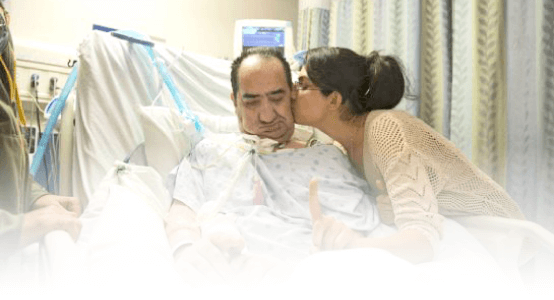Podcast: Play in new window | Download
Subscribe: Apple Podcasts | RSS
Hi, it’s Patrik Hutzel from intensivecarehotline.com with another quick tip for families in intensive care.
So, when people come to our website at intensivecarehotline.com, they can actually opt in for their free instant impact report. And when they opt in for their free instant impact report that we immediately sent to them, we ask them, “What is their biggest frustration?” And one of our subscribers typed in as part of their biggest frustration, “The time they’re giving us on their decision to perform the tracheostomy to my wife.” So, what does that mean? It means that our reader is frustrated with the time he has been given by the ICU team to inform him that his wife needs a tracheostomy.
So, why is this important? So, often when patient is in ICU or an intensive care need a tracheostomy, research suggests, or best practice suggests that a tracheostomy should be done after day 10 to day 14 in intensive care after inability to wean off the ventilator and the breathing tube.
Now, what we see sometimes is that families come to us and say, “Hey, ICU told me today my wife, my husband, my mom, my dad, whoever needs a tracheostomy tomorrow without any forewarning, without any explanations, without any sitting down why is the tracheostomy, for example, the best thing to do for a patient in intensive care?” So again, the lack of communication is a big issue here.
If people are educated about tracheostomy, that should be the right thing to do. Sitting down with families and patients and saying, “Hey, look, we think that tracheostomy here is the best thing to do, and here are the reasons why we don’t think that your family member can come off the ventilator anytime soon. Here are the reasons why: maybe, they still need to stay in an induced coma for whatever reason, maybe they still have pneumonia or an infection, whatever the case may be, and then a tracheostomy might actually help to wean a critically patient off the ventilator in intensive care.”
Then what happens, especially for our audience in the United States, not so much in other countries, but especially in the United States, what we see over and over again is that patients in intensive care, they get told, “Well, we think we should do a tracheostomy tomorrow and we should do a PEG (percutaneous endoscopic gastrostomy) tomorrow.” The next thing families hear and then their loved one needs to go to an LTAC or a Long-Term Acute Care facility. So, it’s almost like ICUs in the U.S., specifically, are not transparent with what’s around the corner once their family member has a tracheostomy.
Now, another thing that we advise generally speaking is that if the ICU suggests that your loved one should have a tracheostomy, then your next question should be, “Has the ICU done everything beyond the shadow of a doubt to get your loved one off the ventilator and the breathing tube and avoid the tracheostomy?” That should be one of your questions. And I’ve made a video about that and written an article, “How do wean a critically ill patient off the breathing tube and the ventilator?”, and I’ll will put a link below this video to point to that video and article so you can have a look at what actually needs to happen to take someone off the ventilator and the breathing tube, also known as extubation.
So, that is my quick tip for today.
Also, I had quite a few questions ask me lately, what are my credentials? What are my qualifications to make these videos? My credentials are, I’m a critical care nurse by background. I have worked in intensive care/ICU for over 20 years in three different countries, and I have also worked as a nurse unit manager for over five years in intensive care.
I have been consulting and advocating for families in intensive care for the last 10 years as part of my intensivecarehotline.com consulting and advocacy service. And I’m also the founder of Intensive Care at Home, where we provide Intensive Care at Home nursing services at home for predominantly long-term ventilated adults and children with tracheostomy and otherwise medically complex patients in need of intensive care nurses at home. And you can find out more information at intensivecareathome.com there.
Now, if you have a loved one in intensive care and you have questions, please contact us at intensivecarehotline.com. Call us on one of the numbers on the top of our website, or simply send us an email to [email protected].
Also, have a look at our membership site for families in intensive care at intensivecaresupport.org. There, you have access to me and my team, 24 hours a day, via email and in a membership area, and we answer all questions intensive care related there.
If you need a medical record review, please contact us as well. We review medical records for patients in intensive care in real time or after intensive care especially if you need closure, if you have unanswered questions or if you’re simply suspecting negligence, we can help you finding the answer. But we highly recommend that we review medical records in real time so it’s almost like we’re giving you a second opinion.
Subscribe to my YouTube channel for regular updates for families in intensive care, click the like button, click the notification bell, share the video with your friends and families, and comment below what questions and insights you have from this video or what you want to see next.
Thanks for watching.
This is Patrik Hutzel from intensivecarehotline.com and I’ll talk to you in a few days.



